|
CA08-007
|
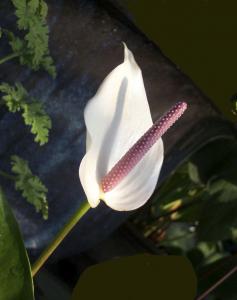
|
This beautiful flower was treated as a white crane to most Chinese, and its snow white spathe give people the feeling of elegant and refined.
|
copyright: Qing, BSA
license: http://images.botany.org/index.html#license |
Image
|
Conant Award

|

|
|
CA08-008
|
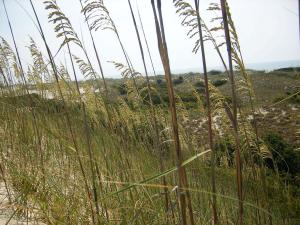
|
Sea oats, Uniola paniculata dominate the coasts of
the Southeastern United States. They have the unique ability
to thrive in harsh frontal dune environments. Shifting sand
stimulates growth and hash salt spray rids the dunes of competitors.
However they cannot overcome the human presence, dune systems
are disappearing with the invasion of development. The stand
pictured however remains intact and quite dense in the pristine
Hammocks Beach State Park found outside Swansboro North Carolina.
|
copyright: Braly, BSA
license: http://images.botany.org/index.html#license |
Image
|
Conant Award

|

|
|
GordonUno
|

|
|
copyright: -
license: - |
Image
|
siteimages

|

|
|
gwebster-2003
|
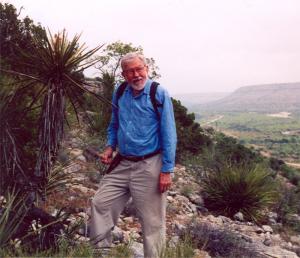
|
Dr. Grady Webster "Smilin all the way to the top" West Texas, 2003
|
copyright: Barbara Webster, BSA
license: http://images.botany.org/index.html#license |
Image
|
BSA Members

|

|
|
m-Ebinger,Stern_4
|
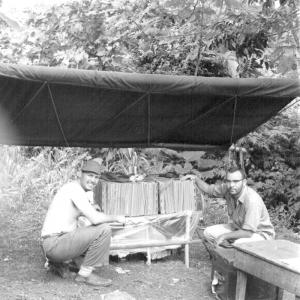
|
William L. Stern and John E. Ebinger, with plant presses on drier
|
copyright: Kenton L. Chambers, BSA
license: http://images.botany.org/index.html#license |
Image
|
BSA Members

|

|
|
m-Stern,Dwyer,Ebinger_2
|

|
1959 William L. Stern, John D. Dwyer and John E. Ebinger on the Rio Tuira, Darien, Panama
|
copyright: Kenton L. Chambers, BSA
license: http://images.botany.org/index.html#license |
Image
|
BSA Members

|

|
|
m-Stern,Ebinger,Dwyer_5
|
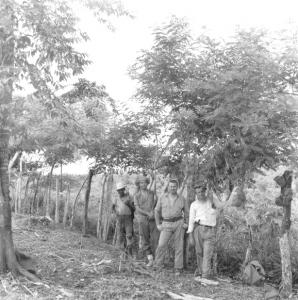
|
William L. Stern, John E. Ebinger and John D. Dwyer in field dress, Darien, Panama
|
copyright: Kenton L. Chambers, BSA
license: http://images.botany.org/index.html#license |
Image
|
BSA Members

|

|
|
m-W_J_Stern_1-1959
|
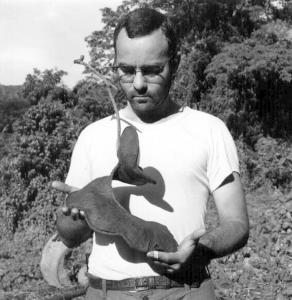
|
William L. Stern, 1959 in Darien, Panama
|
copyright: Kenton L. Chambers, BSA
license: http://images.botany.org/index.html#license |
Image
|
BSA Members

|

|
|
m-W_J_Stern_3-1959
|
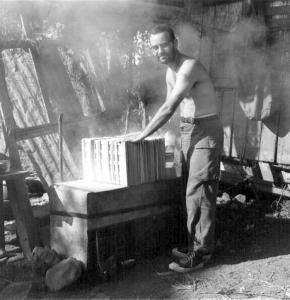
|
William L. Stern, with plant presses on drier in jungles of Darien, Panama
|
copyright: Kenton L. Chambers, BSA
license: http://images.botany.org/index.html#license |
Image
|
BSA Members

|

|
|
pubspageimage
|
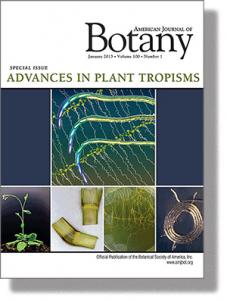
|
|
copyright: -
license: - |
Image
|
siteimages

|

|
|
RachealSpicer
|

|
|
copyright: -
license: - |
Image
|
siteimages

|

|
|
setSC-Allotropa_virgata-1
|
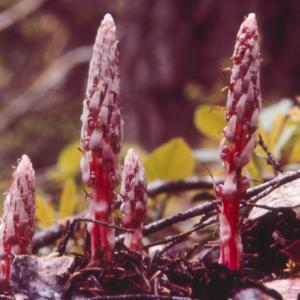
|
Allotropa virgata, the sugar stick, is a parasitic plant related to the Indian Pipe, the Snow Plant, and the other species in the subfamily Monotropoideae of the heath family, Ericaceae. Like the others, Allotropa is parasitic on fungi that occur in leaf litter beneath conifers. Allotropa is found beneath pines and first is the Sierra Nevada and northern Coast Ranges of California, and it extends northward to the Cascade Range of Oregon and the Olympic Range of Washington. The plants in this photograph are young, and only a few of the many flowers have opened at this point.
Return to the Allotropa virgata page or the Parasitic Plant Index.
|
copyright: Carlquist, BSA
license: http://images.botany.org/index.html#license |
Image
|
Parasitic Plants

|

|
|
setSC-Allotropa_virgata-2
|
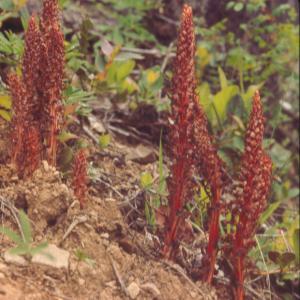
|
Most of the flowers are open on these plants of Allotropa. The flowers turn upward or outward, and that accounts for the name Allotropa, which in Greek means "turned differently." The flowers of the other monotropoids, such as Indian Pipe or the Snow Plant, point downwards.
Return to the Allotropa virgata page or the Parasitic Plant Index.
|
copyright: Carlquist, BSA
license: http://images.botany.org/index.html#license |
Image
|
Parasitic Plants

|

|
|
setSC-Allotropa_virgata-3
|
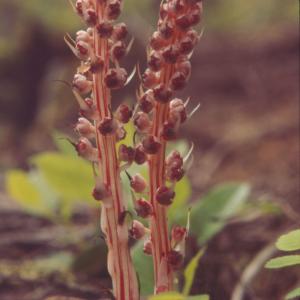
|
This picture shows the red and white stripes of the Sugar Stick plant clearly. One authors says that the plants are red with white stripes. But aren't they really white with red stripes? The leaves of the plant are white, which suggests that perhaps the plant is basically white.
Return to the Allotropa virgata page or the Parasitic Plant Index.
|
copyright: Carlquist, BSA
license: http://images.botany.org/index.html#license |
Image
|
Parasitic Plants

|

|
|
setSC-Allotropa_virgata-4
|
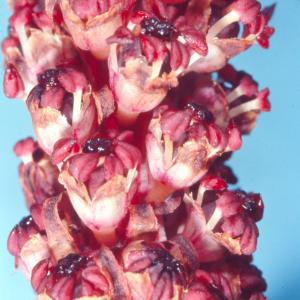
|
- The flowers of Allotropa are white but turn brown quickly. Each flower has give sepals, but no petals. That's why you see the reddish stamens so prominently here. The tips of the stamens point toward the center of the flower.
Return to the Allotropa virgata page or the Parasitic Plant Index.
|
copyright: Carlquist, BSA
license: http://images.botany.org/index.html#license |
Image
|
Parasitic Plants

|

|
|
setSC-Allotropa_virgata-5
|
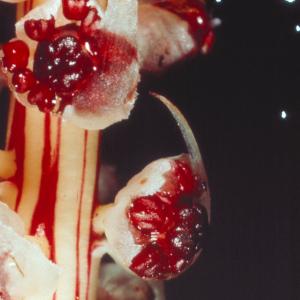
|
In the Allotropa flowers pictured, the sepals are still white. The stamens are bright red, and the stigmas, in the center of the flower, are very dark red and shiny.
Return to the Allotropa virgata page or the Parasitic Plant Index.
|
copyright: Carlquist, BSA
license: http://images.botany.org/index.html#license |
Image
|
Parasitic Plants

|

|
|
setSC-Allotropa_virgata-6
|
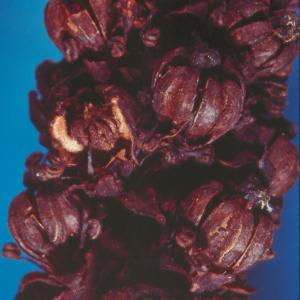
|
- The fruits of the Sugar Stick, Allotropa, are rounded and crowded on the stem. The fruits are dry and papery at maturity, and the tiny seeds fall out through the slits on the sides of the fruits.
Return to the Allotropa virgata page or the Parasitic Plant Index.
|
copyright: Carlquist, BSA
license: http://images.botany.org/index.html#license |
Image
|
Parasitic Plants

|

|
|
setSC-Balanophora_fungosa-1
|
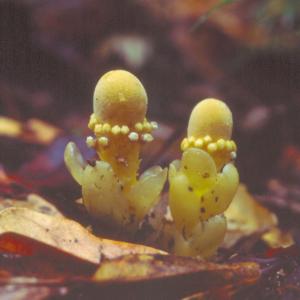
|
Balanophora is a flowering plant that parasitizes roots of trees. It belongs to a tropical family, Balanophoraceae. This is Balanophora fungosa, on the forest floor of Mossman Gorge, near Cairns in Queensland, Australia. Notice the pale colored modified leaves at the bases of these two shoots. Balanophora is entirely lacking in green pigments.
Return to the Balanophora fungosa page or the Parasitic Plant Index.
|
copyright: Carlquist, BSA
license: http://images.botany.org/index.html#license |
Image
|
Parasitic Plants

|

|
|
setSC-Balanophora_fungosa-2
|
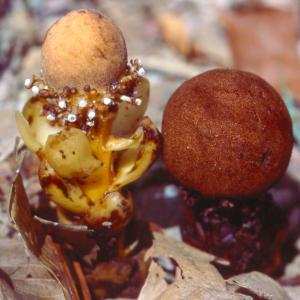
|
Each flowering stalk of Balanophora fungosa bears thousands of female flowers (the top portion) and a much smaller number of male flowers near the base of the flowering stalk. About twenty male flowers can be seen on the flowering stalk at left (they have white tips). The flowering stalk at right is older, and the male flowers have faded.
Return to the Balanophora fungosa page or the Parasitic Plant Index.
|
copyright: Carlquist, BSA
license: http://images.botany.org/index.html#license |
Image
|
Parasitic Plants

|

|
|
setSC-Balanophora_fungosa-3
|
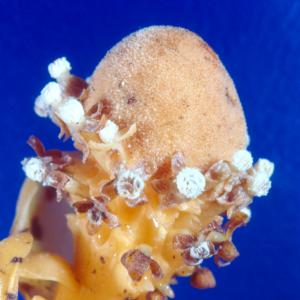
|
The female flowers on the top half of this flowering stalk of Balanophora fungosa are unbelievably small--they just look like a grains of a white powder. The male flowers have petal-like structures (brownish in color) surrounding the white pollen-bearing portions.
Return to the Balanophora fungosa page or the Parasitic Plant Index.
|
copyright: Carlquist, BSA
license: http://images.botany.org/index.html#license |
Image
|
Parasitic Plants

|

|